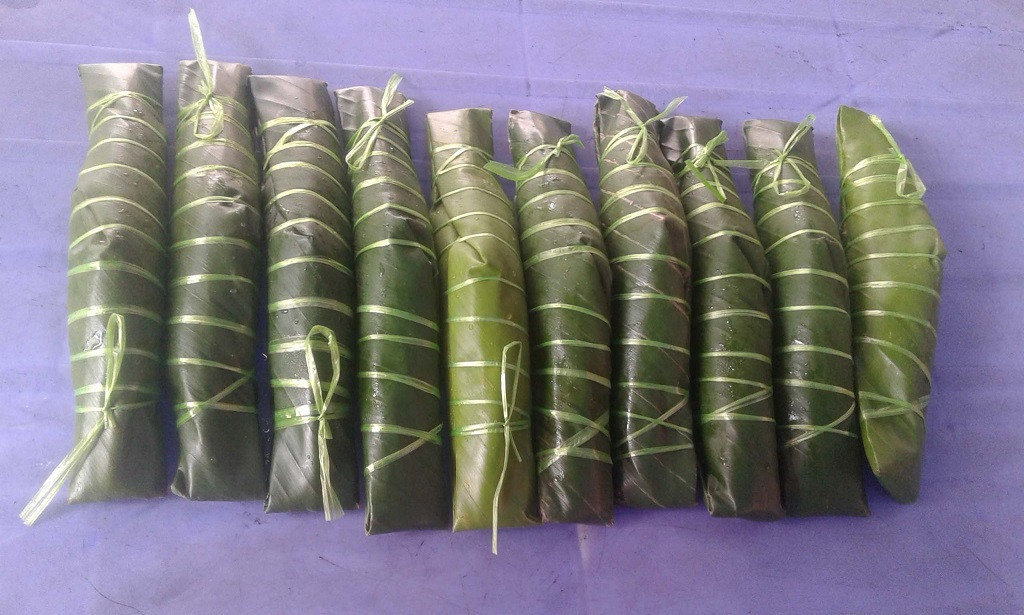
Today, it is a cherished treat commonly prepared during holidays and significant events.
The cake derives its name from its long and slender appearance, resembling a rake used in farming, symbolizing the diligence and hard work of the local people. While the process of making the cake may not be overly complex, its excellence lies in the meticulous selection of ingredients and the art of dough preparation.
To create a delicious rang bua cake, the quality of the ingredients is paramount to impart that distinctive aroma. The choice of filling varies depending on its intended purpose. If the cake is crafted for daily consumption, the filling typically consists of minced pork, wood-ear mushrooms, onions, and spices. Peanuts or mung beans are used in cakes intended for worship or ceremonial occasions.
The wrapping process demands precision and expertise from the cook. Small dong leaves, measuring 35 to 40 centimeters in length and 15 centimeters in width, are employed to encase the cake. The final step involves either boiling or steaming the cake. Boiling expedites the cooking process, while steaming ensures the cake retains its fragrant, chewy texture, and rich flavor.
Due to its affordability, rustic charm, and distinctive flavor, rang bua cake has garnered widespread popularity, especially among local and international tourists who appreciate and savor this delectable treat.
Source: Saigon Times